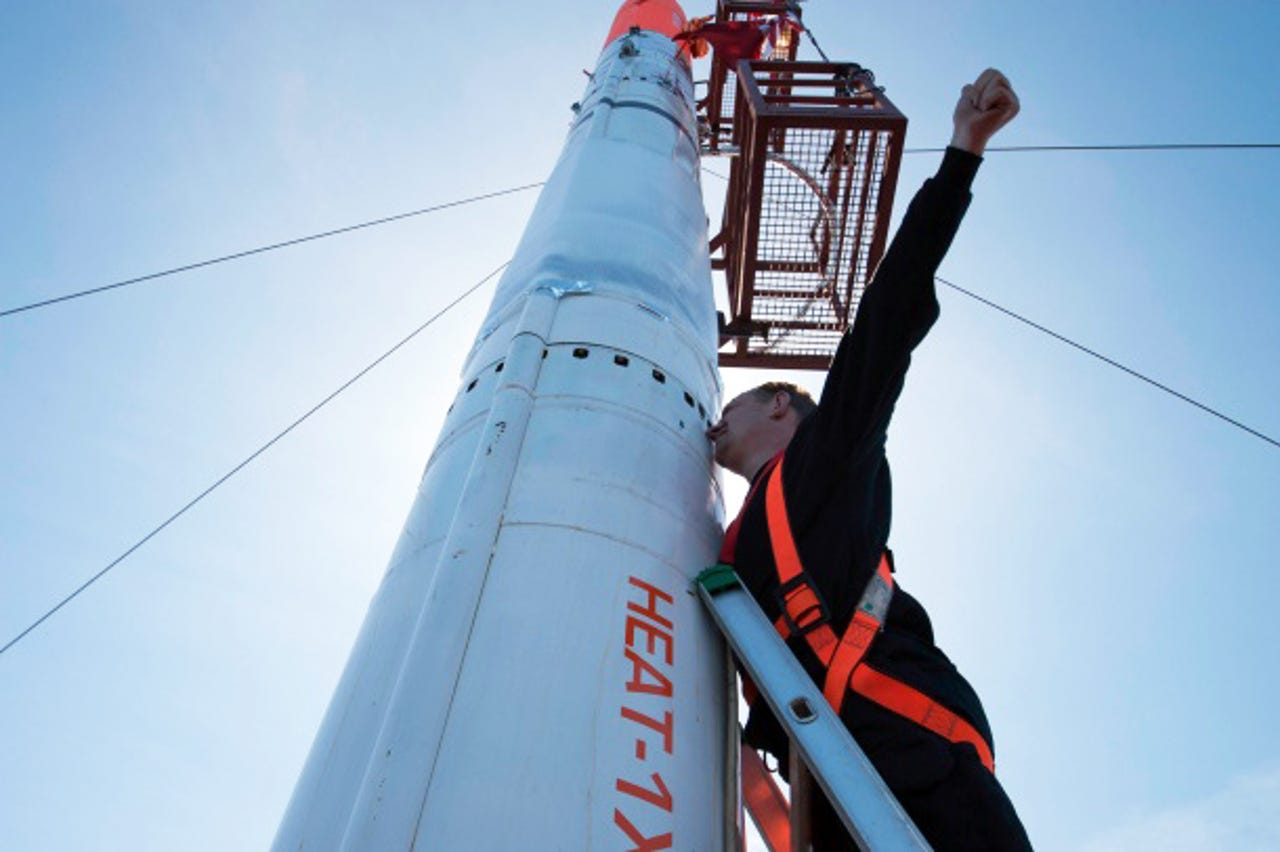Copenhagen Suborbitals is a self-described Danish open-source, privately-funded, non-profit organization with a mission to launch humans into space. On Friday in a major test, it successfully launched a rocket and prototype spacecraft from a platform in the Baltic Sea to about 1.7 miles (2.8 kilometers) above the Earth.
The Heat-1X rocket - pictured above prior to launch with engineer and co-founder Peter Madsen inspecting the main oxidizer valve - is the second launch attempt by the team. A liquid oxygen valve failure stymied the previous attempt, made in September. The valve failed because of a power cut to a 100 Krone ($19.70) hairdryer being used to keep it hot.
The rocket held a crash dummy inside a dummy of the Tycho Brahe spacecraft, which is designed to carry one person on a sub-orbital trip into space. The craft is named after a 16th-century Danish nobleman who came up with remarkably accurate astronomical observations for his time.
According to legend, Brahe was also notable for keeping a clairvoyant dwarf named Jepp as a jester, and having an elk that died after falling down the stairs drunk. The nobleman also wore a fake nose made of gold and silver after losing his real nose in a duel.
Copenhagen Suborbitals says it intends to share as much technical information as is possible within EU export control laws. According to the New Scientist, the firm built the rocket for around $70,000.
Captions: David Meyer, ZDUK and Andy Smith ZDNet U.S.
Photo credit: Sonny Windstrup

